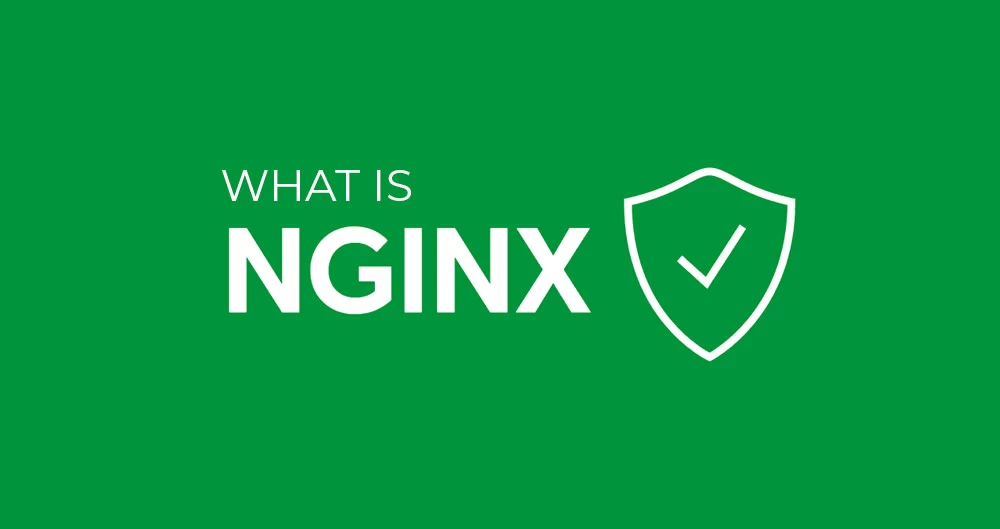If you’ve ever tried to speed up your WordPress site, most likely, you’d have come across the concept of caching.
Nginx caching takes a different approach to caching than the common WordPress caching plugins you might be familiar with. It can be especially helpful in speeding up your WordPress website.
In this article, we learn more about Nginx caching for WordPress and try to understand how Nginx caching works in WordPress.
What is Nginx?

Nginx is a popular web server. It is the underlying software that powers your WordPress site’s server.
Most of the cheap, shared WordPress hosts use a different web-server called Apache. But, Nginx is quite popular with performance-focused managed WordPress hosts and is used by a majority of the high-traffic websites in the world.
As per the report by W3Techs, Apache leads the overall web server market with a 36.2% market share. Nginx, on the other hand, sits in second place at 32.4%. Although Nginx is a younger technology, it is expanding its market share very quickly.
Nginx takes a different approach when compared with Apache. It takes an asynchronous approach where requests are handled in a single thread and one master process can control multiple worker processes. Nginx can handle thousands of HTTP connections at the same time. This makes Nginx a superior option for high-traffic, high-concurrency sites. Apache is not capable of matching these standards.
But, you don’t necessarily have to choose between Apache and Nginx. Some hosting stacks use both. They use Apache as the web-server with Nginx in front acting as a reverse proxy.
How does the Nginx caching for WordPress work?

When a user visits your WordPress website, your server needs to execute PHP and query your database to deliver the final HTML product to your visitors’ browsers. Caching stores that final HTML product and automatically delivers it to visitors, instead of dynamically rendering your content for each visit.
By reducing or eliminating that backend processing, caching can speed up your site and reduce the load on your server.
Nginx lets you do something similar via its fastcgi_cache module but at a server level. It’s capable of directly serving your cached content without involving PHP or WordPress.
Alternatively, with a caching plugin, each request still needs to be handled by PHP at the application level. A caching plugin still eliminates much of the work and is definitely a positive for your site. But, it also requires more CPU cycles than Nginx to handle the request at a server level.
How can you use Nginx caching for WordPress?

Let’s take a look at a few ways in which you can implement Nginx FastCGI caching in WordPress:
Easy method for non-technical people
If you’re not a web developer and don’t understand its technical side, the easiest solution is to opt for a WordPress host that supports Nginx caching out-of-the-box.
Many performance-focused WordPress hosts use the Nginx web server and/or use Nginx FastCGI cache. For example, both Kinsta and Flywheel use Nginx and its FastCGI cache module.
In this way, you can get all the benefits of the Nginx FastCGI cache without requiring to do any technical implementation.
Advanced Method for Web Developers and Designers
If you’re more advanced or a web developer, you can also set up your own server using Nginx and the Nginx FastCGI cache module. Here’s a tutorial to help you set up FastCGI caching with Nginx on your VPS.
Then, you can use the free Nginx Helper WordPress plugin to integrate Nginx FastCGI cache into WordPress,.
Nginx Helper has some features to help your WordPress site work with Nginx. It also has the ability to purge the Nginx cache. It adds a ‘Purge Entire Cache’ button with which you can manually purge the Nginx FastCGI cache from your WordPress dashboard.
It also lets you establish automatic purge rules. For example, you can set a rule to automatically purge some or all of your content when you add, modify, or delete WordPress content.
Final Words
Nginx is the second-most popular web server after Apache and will soon surpass Apache in popularity. Nginx is quite successful in high-traffic situations and when serving static content. Moreover, you can either use only Nginx or also put Nginx in front of Apache as a reverse proxy.
With the Nginx FastCGI cache module, you can serve static files directly from your server without needing to use PHP or hit your WordPress application. This is quite different from how most WordPress caching plugins function.
The simplest way of using Nginx caching on WordPress is to choose a host that has already configured everything for you.
Got any questions related to Nginx caching? Let us know in the comments below and we’ll help resolve your query. You can also write to us for any detailed queries or questions and we’ll get back to you within 48 hours with a solution.




This will keep your readers coming back later on to read more of the blogs you write.
Wow, this article is good, my sister is analyzing these things, therefore I am going to tell her.
Very nice write-up. I absolutely love this website. Keep it up!
Some truly choice posts on this website, Saved to favorites.
You have made some really good points there. I looked on the web for more info about the “Nginx Caching for WordPress” and found most valuable details on this web site.
I am really impressed with your writing skills and also with the layout of your blog. Keep up the nice quality writing, it is rare to see a great blog like this one these days..
Thanks for sharing your thoughts about Nginx Caching. Regards
Hi, I want to say that this article is amazing, nicely written, and comes with almost all vital Info. I’d like to look for extra posts like this.
Thank you for writing so many excellent articles.